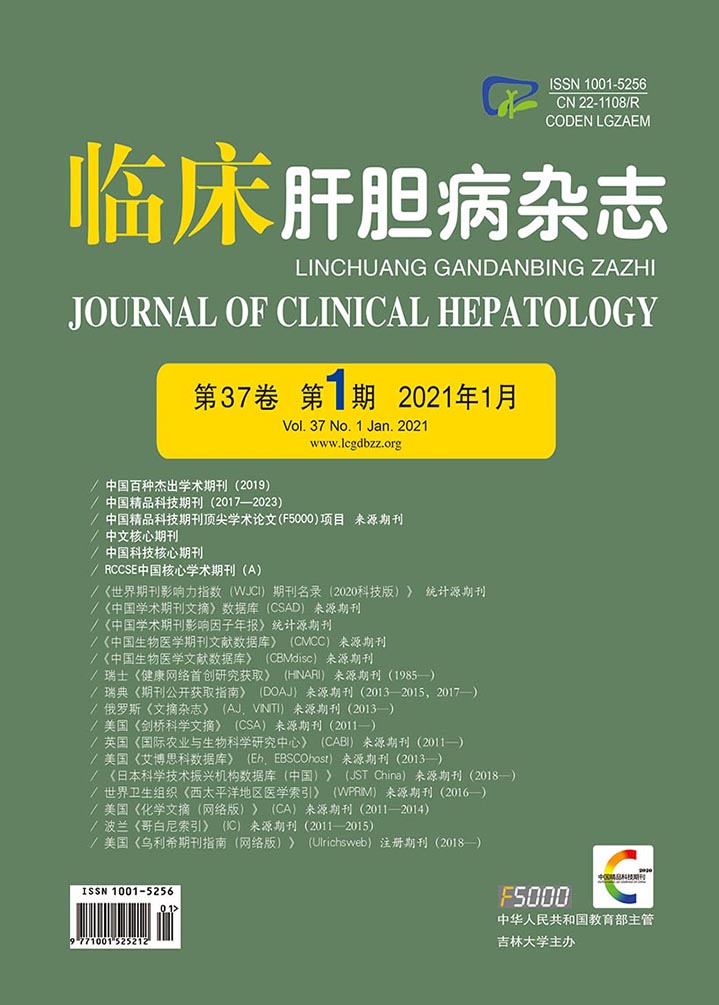| [1] |
|
| [2] |
CHEMALY RF, HALL GS, KEYS TF, et al. Microbiology of liver abscesses and the predictive value of abscess gram stain and associated blood cultures[J]. Diagn Microbiol Infect Dis, 2003, 46(4): 245-248. DOI: 10.1016/S0732-8893(03)00088-9 |
| [3] |
CHEN F, ZHANG YT, QIAO HJ, et al. Clinical features of Klebsiella pneumoniae liver abscess[J]. J Clin Hepatol, 2016, 32(4): 764-768. (in Chinese) DOI: 10.3969/j.issn.1001-5256.2016.04.034 |
| [4] |
|
| [5] |
|
| [6] |
CHEN SC, WU WY, YEH CH, et al. Comparison of Escherichia coli and Klebsiella pneumoniae liver abscesses[J]. Am J Med Sci, 2007, 334(2): 97-105. DOI: 10.1097/MAJ.0b013e31812f59c7 |
| [7] |
BELLMANN-WEILER R, WEISS G. Pitfalls in the diagnosis and therapy of infections in elderly patients-a mini-review[J]. Gerontology, 2009, 55(3): 241-249. DOI: 10.1159/000193996 |
| [8] |
YU YL, WANG JJ, WANG JY. Clinical significance of the combined detection of procalcitonin, fibrin and fibrinogen degradation products and C-reactive protein in children with sepsis[J]. J Clin Transfus Lab Med, 2018, 20(5): 521-524. (in Chinese) DOI: 10.3969/j.issn.1671-2587.2018.05.021 |
| [9] |
KHAN R, HAMID S, ABID S, et al. Predictive factors for early aspiration in liver abscess[J]. World J Gastroenterol, 2008, 14(13): 2089-2093. DOI: 10.3748/wjg.14.2089 |
| [10] |
CERWENKA H. Pyogenic liver abscess: Differences in etiology and treatment in Southeast Asia and Central Europe[J]. World J Gastroenterol, 2010, 16(20): 2458-2462. DOI: 10.3748/wjg.v16.i20.2458 |
| [11] |
CHAN DS, ARCHULETA S, LLORIN RM, et al. Standardized outpatient management of Klebsiella pneumoniae liver abscesses[J]. Int J Infect Dis, 2013, 17(3): e185-e188. DOI: 10.1016/j.ijid.2012.10.002 |
| [12] |
|
| [13] |
SHELAT VG, WANG Q, CHIA CL, et al. Patients with culture negative pyogenic liver abscess have the same outcomes compared to those with Klebsiella pneumoniae pyogenic liver abscess[J]. Hepatobiliary Pancreat Dis Int, 2016, 15(5): 504-511. DOI: 10.1016/S1499-3872(16)60127-3 |
| [14] |
YOON JH, KIM YJ, KIM SI. Prognosis of liver abscess with no identified organism[J]. BMC Infect Dis, 2019, 19(1): 488. DOI: 10.1186/s12879-019-4131-z |
| [15] |
ZENG DH, ZHANG DQ, LIANG YM, et al. Evaluation of the efficacy of percutaneous transhepatic catheter drainage guided by color Doppler ultrasound in the treatment of hepatic abscess[J]. J Prac Hepatol, 2013, 16(6): 561-562. (in Chinese) DOI: 10.3969/j.issn.1672-5069.2013.06.032 |
| [16] |
YANG XP, ZHANG Y, WANG LS, et al. Evaluation on efficacy and safety of precise treatment guided by ultrasound for acquired immune deficiency syndrome patients with liver abscess[J/CD]. Chin J Exp Clin Infect Dis (Electronic Edition), 2017, 11(3): 277-281. (in Chinese)
杨学平, 张瑶, 王连双, 等. 超声引导精准治疗获得性免疫缺陷综合征合并肝脓肿的疗效及安全性评价[J/CD]. 中华实验和临床感染病杂志(电子版), 2017, 11(3): 277-281.
|







 DownLoad:
DownLoad: